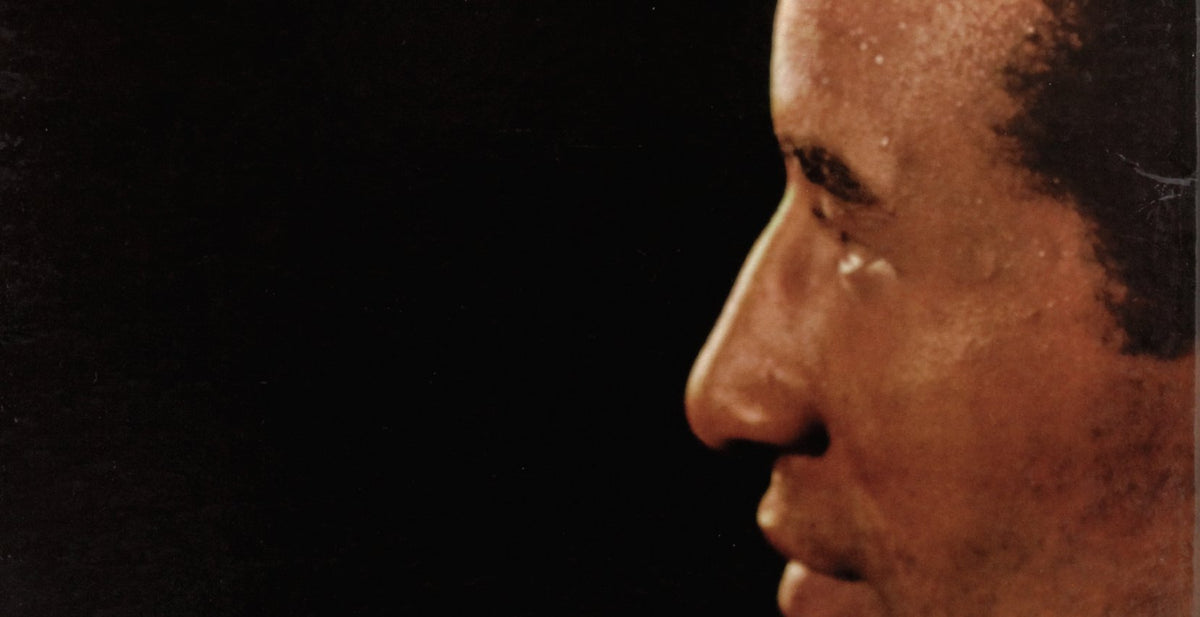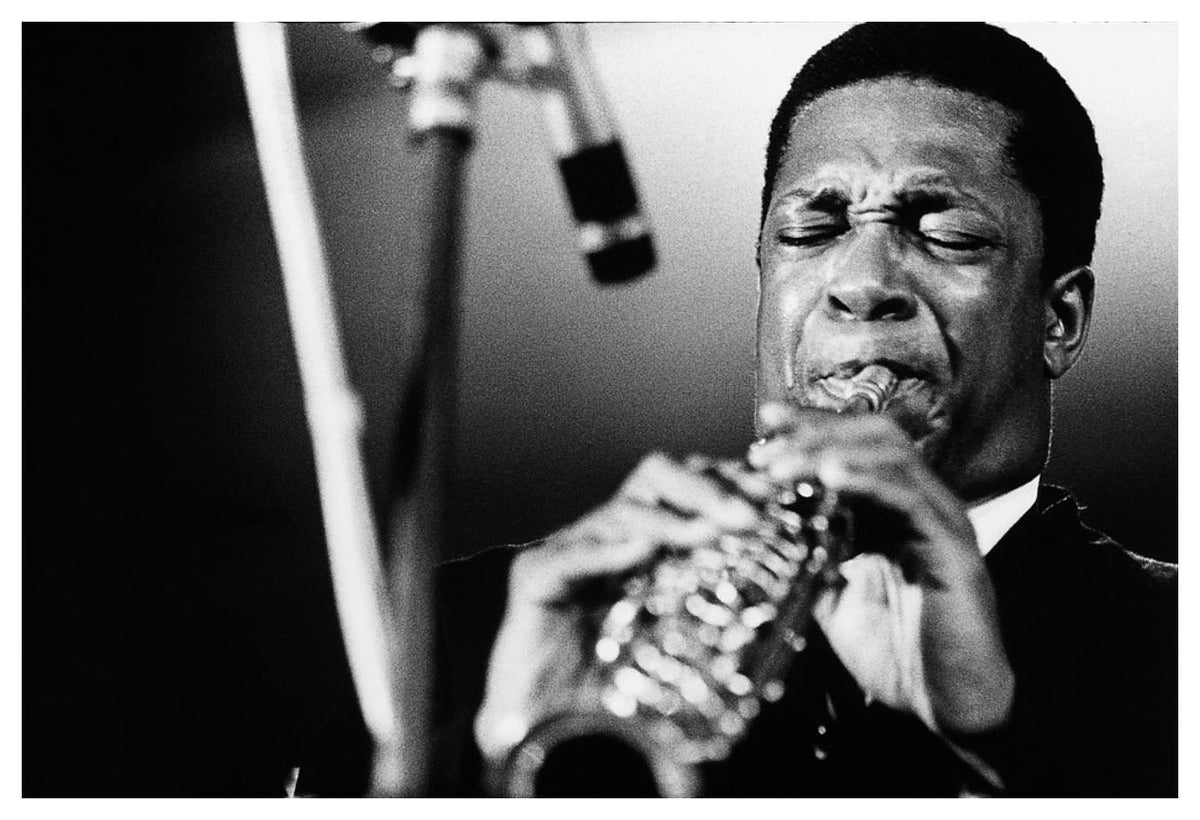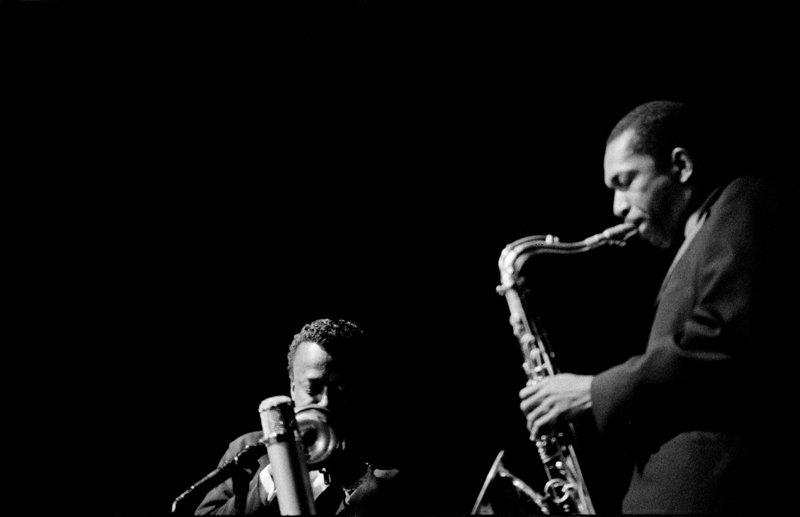The Jazz Pianist Who Made One Masterpiece And Disappeared
Read An Excerpt From The Liner Notes To Our New Exclusive
Editor's Note: Today, we're reissuing the Max Roach Trio's album with the Legendary Hasaan. The album came to our attention from Ben Ratliff, who wrote the Listening Notes booklet for our Vinyl Me, Please Classics reissue of Max Roach's Percussion Bitter Sweet. Hasaan only made one album, and when Ben told us about it, we looked into the album and helped organize this reissue. When we realized we could have new liner notes for the album, we knew who to ask.
You can buy the album, which has been remastered by Kevin Gray, here.
“I was in my basement practicing, and he came past and knocked on the window,” said the saxophonist Odean Pope recently, remembering the first time he met his friend Hasaan Ibn Ali.
“I was about 16 at the time. I came to the door. He asked me whether I’d like to practice with him. So I told him yes. We struck up a very good relationship, practicing almost every day together. He was so advanced on harmonic concepts, melodic concepts, rhythmic concepts, that he was having difficulty working with anyone and making jobs with anyone. But I was really interested in what he was doing, because he was doing something different.”
That would have been around 1954. Hasaan, seven years older than Pope, born William Henry Langford, lived four blocks away in North Philadelphia with his parents. He had worked on the road in the late 1940s with the rhythm-and-blues trumpeter and bandleader Joe Morris, under the name Count Langford, but at this point was playing locally — the Sahara, the Woodbine, private clubs in North Philly, occasionally a job in New York. He was a theorist; he had an idea about using inverted-fourth intervallic relationships to create a structure for improvisation, and it is maintained by Pope (as well as the musician and writer DeSayles Grey) that Coltrane later used that concept in much of his late work.
In any case, Ali’s ideas ran ahead of the marketplace. Stylistically, he was in tune with pianists who sat adjacent to bebop — he specifically admired Elmo Hope and Thelonious Monk — and beboppers were interested in fractious phrasing and unresolved dissonance, but even in their context Ali represented an extreme. Starting around 1948 — around the time he changed his name — he became a difficult fit at dance jobs and jam sessions. Whatever the norm was for the job — houserocking R&B, standards, bebop — he would unsettle known tunes with jagged fantasias or cause confusion with his own unconventional music. “There was no looking back,” said the bassist Jymie Merritt, who played frequently with him on duo gigs. “He was going further away from the center. From ’48 on, there were more guys playing bebop than anything else — it was the thing. And he was going somewhere away from it.”
In the 1950s and early ’60s, Pope and Ali regularly played in the front room of Hasaan’s house at 2406 North Gratz Street. (Other regulars in the front room during these years, according to Pope and others, included the bassists Jimmy Garrison, Eddie Mathias, and the saxophonist John Coltrane.) They practiced from nine in the morning until noon, at which point Hasaan’s retired father brought food to the piano. After lunch, Pope and Ali might play a game of chess, then resume practicing from two till five; at which point his mother, a domestic worker, arrived home. She would give Hasaan a little money and cigarettes, and then Pope and Ali dressed and went out. “We had about three or four houses where we used to play,” Pope remembered, “and they would give us a couple dollars and coffee and cake and things like that. This was like our job. We did this almost every day.”
Hasaan Ibn Ali’s life, on the evidence of stories like Pope’s — and there are few other musicians left who have them — was mostly local and undocumented. He died in 1980. The Max Roach Trio Featuring the Legendary Hasaan, recorded for Atlantic in 1964 and accomplished through Roach’s advocacy, was an extraordinary exception. It is a record that has been probably used an example, an oddity or a statistic more than it has been absorbed into the jazz tradition. It is the only recording of him known to have been released during his lifetime. (He did one more session with a quartet for Atlantic a year later; those tapes, long thought lost, have recently been found. Perhaps his moment is yet to arrive.)
My own knowledge of the record dates to when it first appeared on CD in the early 1990s, and I am sure I first heard about it in the context of records by other “obscure” pianists — John Dennis, Dick Twardzik, etc. But obscurity is not an aspect of music; it is a problem of distribution. Many musicians have at least heard of The Legendary Hasaan, especially because of the involvement of Roach or the bassist Art Davis, but few talk about Ali much, because so little is known — or maybe because it evokes feelings too private or complex or singular to share very easily. At any rate, if you declare a causal link between Ali and Thelonious Monk, Ali and Cecil Taylor, Ali and Don Pullen, you are probably inventing something. Ali didn’t seem to work within jazz’s usual system of generosity and continuity. He had a few disciples, but he didn’t have an audience.
Ali, in the mid-’60s, was not mythic or symbolic, imposing, exotic or the one who got away. He wasn’t outside. He was inside — a familiar enigma. The word “legendary” was, perhaps, a way for Atlantic records to imply that he was a personage among a group of influential Philadelphia musicians, and would be unknown outside of that group, but please, give him a chance! This album’s title evokes Genius of Modern Music, Blue Note’s first Monk album from 1951, when Monk wasn’t much known outside of his own circle either. And as with Monk, the mainstream jazz press had little time for Hasaan. Harvey Siders, the Down Beat critic, gave the record two and a half stars: he called it “one-dimensional,” adding that “if there is a poetic side to Ali, it has not been projected in this debut.”
Ali seems to have been proud of his enigmatic reputation — or, at least, it came easily to him. The saxophonist Jimmy Heath told me that Hasaan once said to Coltrane, in Heath’s presence, about Coltrane’s use of extended chords such as thirteenths: “John, you play all those thirteenths, but I’ve got twenty-ninths.” Kenny Barron remembers asking Hasaan the name of a particular chord he played after a gig in Philadelphia; Hasaan replied “C-sixty-five.” He seems to have had the strange affectation of wearing his ties so that they hung down only about four inches from the knot; Heath and Merritt believe he cut them that way with scissors.
There are a few letters from Hasaan to Max Roach within Roach’s archives at the Library of Congress, written in ornate, spiraling penmanship. One seems to be looking for help in setting up a publishing company, and communicates ideas such as: “This I do express as a heartfelt if in any way of development in your attention in so or by your dear volume of true modern method so I can be successful with all of my songs of music so I may keep giving & obtain its fountainhead in the giving of its language earnestly.” In the original liner notes for this record, Alan Sukoenig quotes Hasaan saying this: “The first musician I ever heard close range, aside from Art Tatum, that created this createth action of music that was already created in his playing years ago…’t is Elmo Hope.” I asked Sukoenig in 2018 whether Hasaan’s remarks were written — as I had always assumed — or spoken. He said that they were spoken slowly, over the phone, for dictation. Sukoenig added that sometimes Hasaan liked to affect what he assumed was an Arabic accent.
Perhaps Hasaan was a bit obscure and recondite. But this record sounds the opposite: urgent and vivid, collectively alive, full of organized exchanges. Ali is prepared with assertive music on a slightly out of tune piano, from his first gestures on the first tune, “Three-Four Vs. Six-Eight Four-Four Ways”: the banged cluster and the ascending trickle. Roach is prepared to charge back at him. And as the drummer Nasheet Waits has suggested, maybe all that assertion was a form of applying order. Roach may have been acting like an arranger, helping to give Ali’s compositions as much shape as possible. He was helping an obscure man become shareable.
The Legendary Hasaan, among other things, is a great work of sequencing, a set of dramas arranged in a particular way. On vinyl you will likely hear it in proper order. I would be wary of assigning particular emotional narratives to anyone’s instrumental music, because it is too easy be wrong. With someone like Hasaan Ibn Ali, I would be even more wary. There seems to have been a lot going on inside him, and neither I nor you will ever know precisely what it was. (Plus: what’s the percentage in declaring that a C-sixty-five chord translates to one specific feeling?) But you might be tempted, because this is a stirring record. When I hear “Three-Four Vs. Six-Eight,” “Off My Back Jack,” “Almost Like Me,” “Pay Not Play Not,” “To Inscribe,” I sense human feelings in their most complex and conflicted state: needling questions and thunderbolt answers and sudden changes of subject; excitement and giddiness; vexed grandiloquence; muted or subdued worry; contemplation and reflection.
I also sense movement of bodies, at all times: running and swimming and, especially, the most heroic, bravura kind of solo dancing.
In his original liner notes, Sukoenig describes Hasaan in the studio starting to play before taking his overcoat off. Jymie Merritt saw Hasaan a few days later, before he left to return home. “It was the beginning of the cold season, and he’d left his overcoat somewhere,” he recalled. “I asked him, where is the money that you made? Did you put it in a safe place? He didn’t have a nickel. He had somehow divested himself of every cent he had. He had no money and no overcoat. I gave him mine and sent him back to Philadelphia. I realized there was very little I could do to help him.”
Ben Ratliff's writing has appeared in The New York Times, Esquire, and elsewhere. He's the author of four books, most recently 2016's Every Song Ever.
Related Articles
Join the Club!
Join Now, Starting at $36Pages







